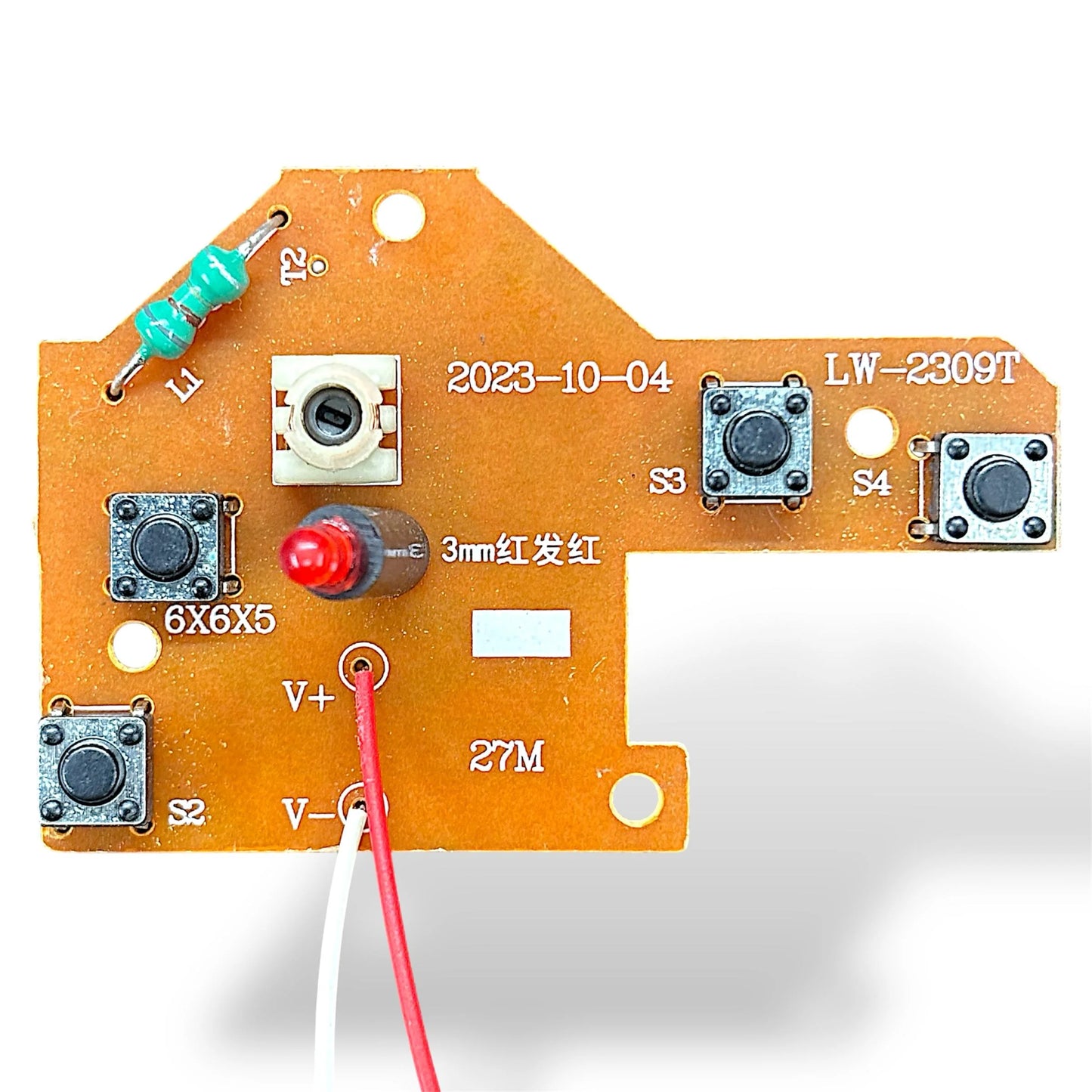Harish Projects
RC Receiver & Transmitter | Wireless Controller for RC Cars
RC Receiver & Transmitter | Wireless Controller for RC Cars
Couldn't load pickup availability
Share
Specification
- Channel : 4 (Forward-Backward, Left-Right)
- Input Voltage : 3.7v DC
Note : Please make unboxing connection videos from scratch. This is a sensitive electronic module. Please follow/watch this video before connection.
How to use watch our instruction video, click on the link below:
New Video : https://youtu.be/iC3bqMaayc0
Video 1 : https://youtu.be/4VysO7xE0fY
Video 2 : https://youtu.be/0CHHgbv4skg
Description
A radio control (RC) receiver and transmitter are integral components of a remote control system used to operate RC vehicles, aircraft, boats, and other remote-controlled devices. The transmitter, often referred to as the radio controller or remote control, is held and operated by the user, while the receiver is installed in the RC vehicle or device.
Transmitter:
The transmitter is the handheld device that allows the user to control the RC vehicle or device. It typically consists of the following components:
Antenna: The antenna sends out the radio signals generated by the transmitter.
Controls: The transmitter features various controls such as joysticks, switches, buttons, or dials. These controls are used by the user to send commands to the RC vehicle or device, such as controlling its speed, direction, or other functions.
Power source: The transmitter is powered by batteries or rechargeable batteries, providing the necessary electrical energy to operate the device.
RF Module: The RF (Radio Frequency) module is responsible for generating and transmitting the radio signals from the transmitter to the receiver. It converts the user’s commands into radio signals that are then transmitted wirelessly to the receiver.
Receiver:
The receiver is installed in the RC vehicle or device and receives the radio signals sent by the transmitter. It typically consists of the following components:
Antenna: The receiver has an antenna that receives the radio signals sent by the transmitter.
RF Module: Similar to the transmitter, the receiver has an RF module that receives the radio signals and converts them into electrical signals.
Control outputs: The receiver is connected to the various control inputs of the RC vehicle or device, such as the motor speed controller, servo controllers, or other control mechanisms. It translates the received signals into commands that control the vehicle’s movement or specific functions.
Power source: The receiver requires power to operate and is usually connected to the vehicle’s power system or has its own battery or power source.
Signal processing circuitry: The receiver may also have circuitry to process and filter the received signals, ensuring reliable communication between the transmitter and receiver.
Binding/Pairing functionality: Many receivers feature binding or pairing functionality to establish a secure connection with a specific transmitter. This ensures that multiple RC systems can operate in the same area without interfering with each other.
The transmitter and receiver work together to establish a wireless communication link, allowing the user to control the RC vehicle or device remotely. The user’s commands are transmitted from the transmitter to the receiver via radio signals, which are then interpreted by the receiver to control the various functions of the RC vehicle or device.




Very good
Experience
Thank you!
Good
Good products According to the cost
How to use new transmitter and register
Dear customer, kindly watch product connection video : https://www.youtube.com/watch?v=iC3bqMaayc0
Maswanpur





